3,6-Dichlorophthalic anhydride
Synonym(s):4,7-Dichloroisobenzofuran-1,3-dione
- CAS NO.:4466-59-5
- Empirical Formula: C8H2Cl2O3
- Molecular Weight: 217.01
- MDL number: MFCD00042786
- EINECS: 224-733-2
- SAFETY DATA SHEET (SDS)
- Update Date: 2023-05-15 10:43:54
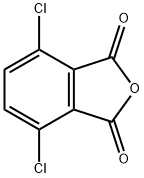
What is 3,6-Dichlorophthalic anhydride?
Chemical properties
off-white to white powder
The Uses of 3,6-Dichlorophthalic anhydride
3,6-Dichlorophthalic Anhydride is an intermediate in the synthesis of phthalic compounds, phthalazines, and quinones with antimicrobial activity.
What are the applications of Application
3,6-Dichlorophthalic anhydride is is used in the study of molecular stacking
Purification Methods
Boil the anhydride in xylene (allowing any vapours which would contain H2O to be removed, e.g. Dean and Stark trap), which causes any acid present to dehydrate to the anhydride, and cool. Recrystallise it from xylene [Villiger Chem Ber 42 3539 1909, Fedoorow Izv Akad Nauk SSSR Otd Khim Nauk 397 1948, Chem Abstr 1585 1948]. [Beilstein 17/11 V 260.]
Properties of 3,6-Dichlorophthalic anhydride
| Melting point: | 188-190 °C(lit.) |
| Boiling point: | 339.1°C (rough estimate) |
| Density | 1.5974 (estimate) |
| storage temp. | under inert gas (nitrogen or Argon) at 2-8°C |
| solubility | Chloroform (Slightly), Ethyl Acetate (Slightly, Heated) |
| form | Solid |
| color | White to Off-White |
| BRN | 164697 |
| Stability: | Moisture Sensitive |
| CAS DataBase Reference | 4466-59-5(CAS DataBase Reference) |
| NIST Chemistry Reference | 3,6-Dichloro-phthalic anhydride(4466-59-5) |
Safety information for 3,6-Dichlorophthalic anhydride
| Signal word | Warning |
| Pictogram(s) |
 Exclamation Mark Irritant GHS07 |
| GHS Hazard Statements |
H315:Skin corrosion/irritation H319:Serious eye damage/eye irritation H335:Specific target organ toxicity, single exposure;Respiratory tract irritation |
| Precautionary Statement Codes |
P261:Avoid breathing dust/fume/gas/mist/vapours/spray. P264:Wash hands thoroughly after handling. P264:Wash skin thouroughly after handling. P271:Use only outdoors or in a well-ventilated area. P280:Wear protective gloves/protective clothing/eye protection/face protection. P302+P352:IF ON SKIN: wash with plenty of soap and water. P305+P351+P338:IF IN EYES: Rinse cautiously with water for several minutes. Remove contact lenses, if present and easy to do. Continuerinsing. |
Computed Descriptors for 3,6-Dichlorophthalic anhydride
New Products
(S)-3-Aminobutanenitrile hydrochloride 4-Methylphenylacetic acid N-Boc-D-alaninol N-BOC-D/L-ALANINOL Tert-butyl bis(2-chloroethyl)carbamate 3-Morpholino-1-(4-nitrophenyl)-5,6-dihydropyridin- 2(1H)-one Furan-2,5-Dicarboxylic Acid Tropic acid 1-Bromo-3,5-Di-Tert-Butylbenzene S-2-CHLORO PROPIONIC ACID ETHYL ISOCYANOACETATE 2-Bromo-1,3-Bis(Dimethylamino)Trimethinium Hexafluorophosphate 4-IODO BENZOIC ACID 3-NITRO-2-METHYL ANILINE 1-(2,4-DICHLOROPHENYL) ETHANAMINE (2-Hydroxyphenyl)acetonitrile 4-Bromopyrazole 2-(Cyanocyclohexyl)acetic acid 4-methoxy-3,5-dinitropyridine 1-(4-(aminomethyl)benzyl)urea hydrochloride 2-aminopropyl benzoate hydrochloride diethyl 2-(2-((tertbutoxycarbonyl)amino) ethyl)malonate tert-butyl 4- (ureidomethyl)benzylcarbamate Ethyl-2-chloro((4-methoxyphenyl)hydrazono)acetateRelated products of tetrahydrofuran


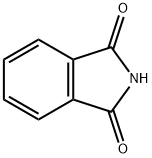
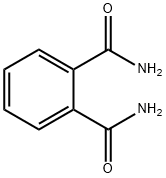
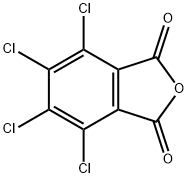
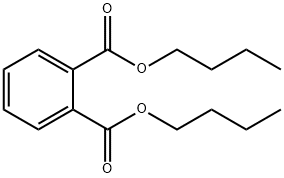

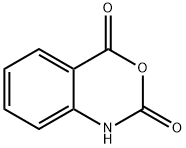
You may like
-
 2033-24-1 98%View Details
2033-24-1 98%View Details
2033-24-1 -
 42831-50-5 5-METHYLISOXAZOLE-4-CARBOXYLIC ACID 98%View Details
42831-50-5 5-METHYLISOXAZOLE-4-CARBOXYLIC ACID 98%View Details
42831-50-5 -
 1975-50-4 98%View Details
1975-50-4 98%View Details
1975-50-4 -
 2-HYDROXY BENZYL ALCOHOL 98%View Details
2-HYDROXY BENZYL ALCOHOL 98%View Details
90-01-7 -
 2-Chloro-1,3-Bis(Dimethylamino)Trimethinium Hexafluorophosphate 221615-75-4 98%View Details
2-Chloro-1,3-Bis(Dimethylamino)Trimethinium Hexafluorophosphate 221615-75-4 98%View Details
221615-75-4 -
 61397-56-6 CIS BROMO BENZOATE 98%View Details
61397-56-6 CIS BROMO BENZOATE 98%View Details
61397-56-6 -
 14714-50-2 (2-Hydroxyphenyl)acetonitrile 98+View Details
14714-50-2 (2-Hydroxyphenyl)acetonitrile 98+View Details
14714-50-2 -
 118753-70-1 98+View Details
118753-70-1 98+View Details
118753-70-1
Statement: All products displayed on this website are only used for non medical purposes such as industrial applications or scientific research, and cannot be used for clinical diagnosis or treatment of humans or animals. They are not medicinal or edible.